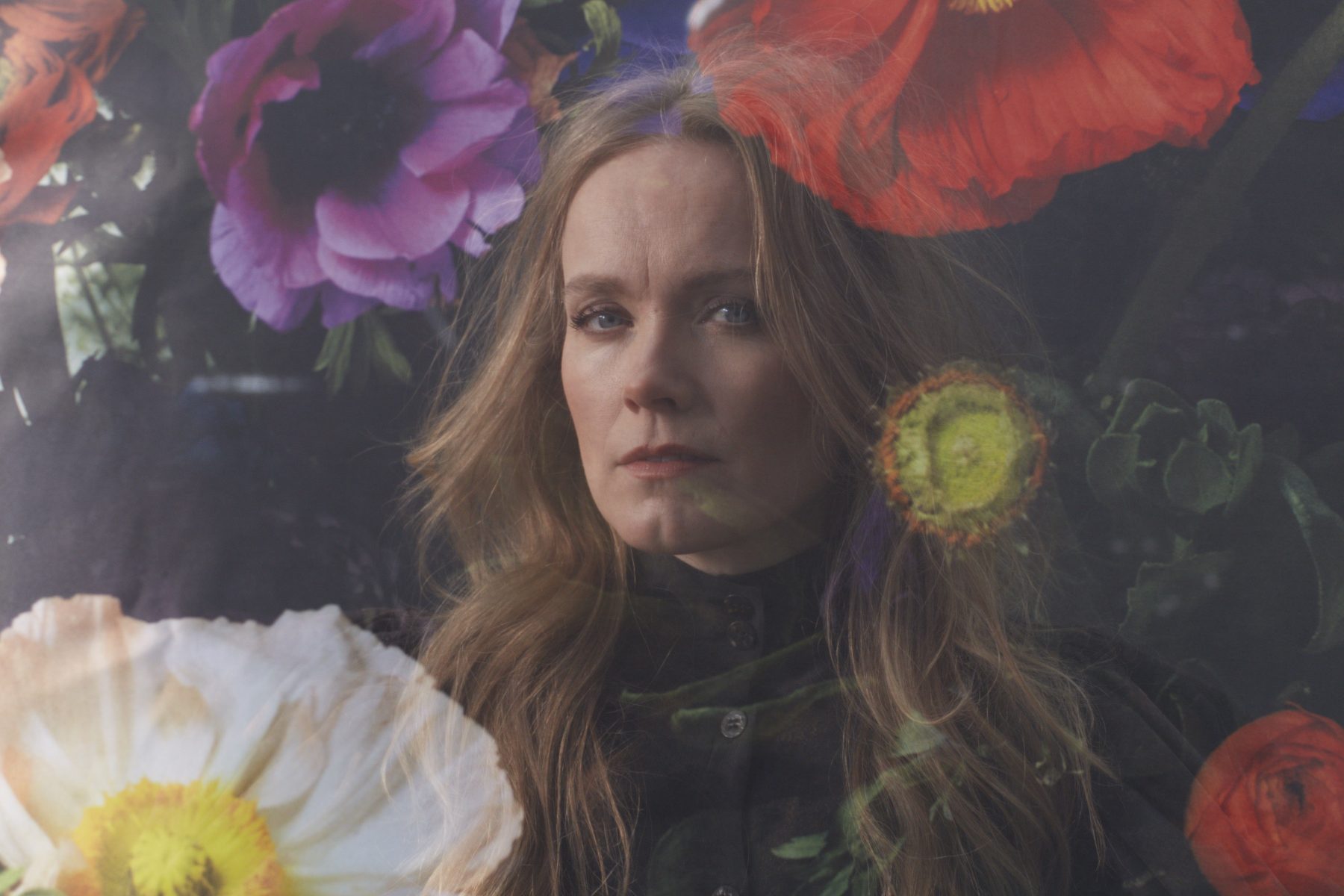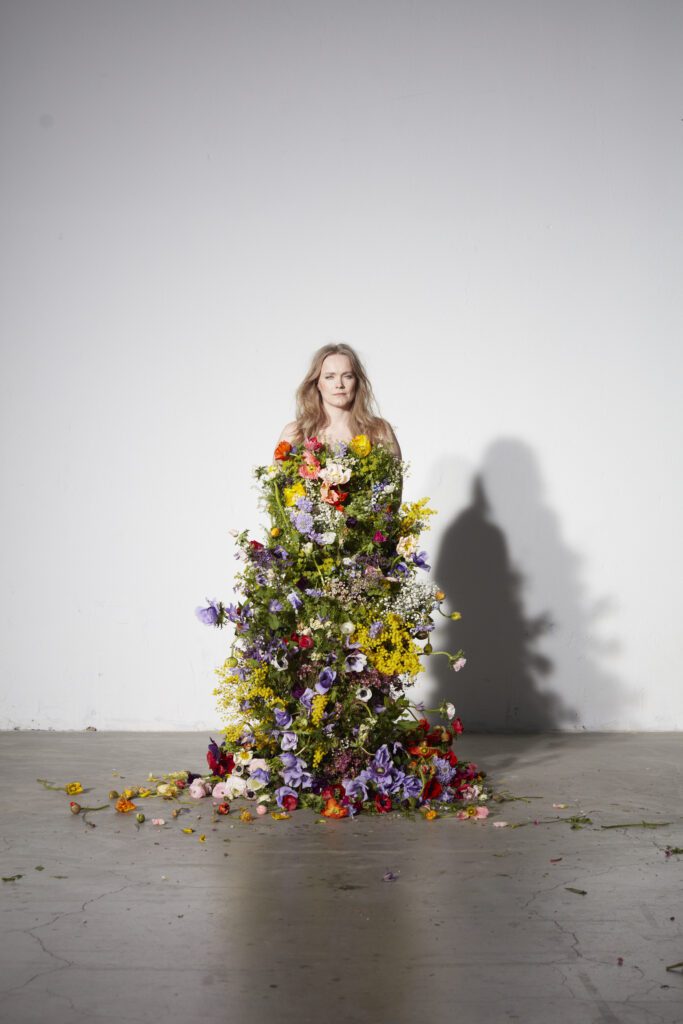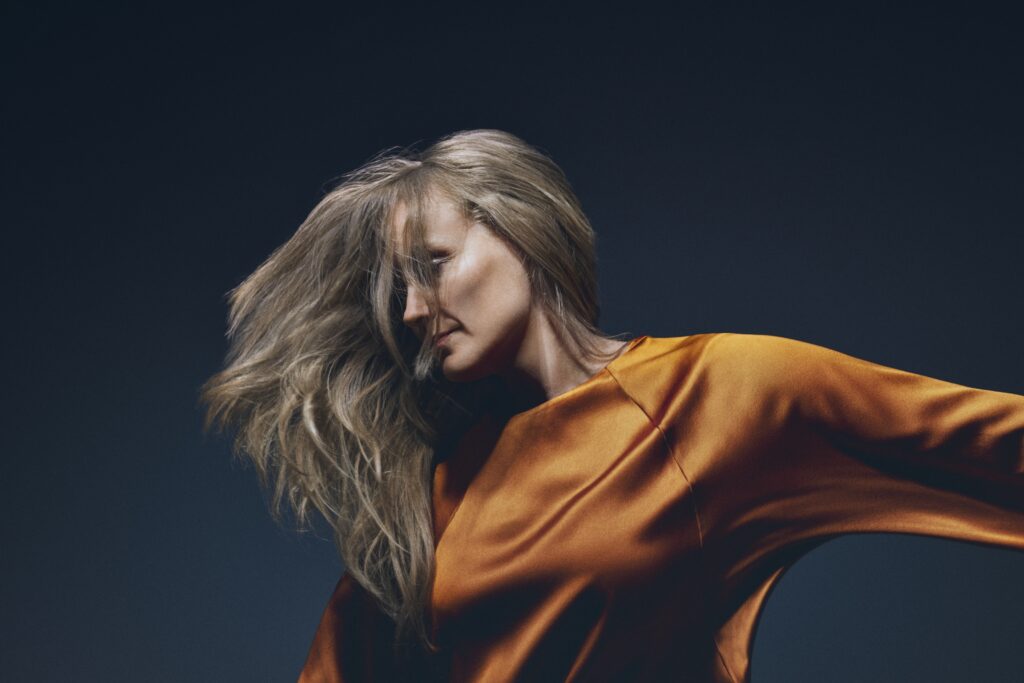The Norwegian songwriter Ane Brun returns this autumn with her first body of original music for five years: two albums – After the Great Storm and How Beauty Holds the Hand of Sorrow – released a month apart.
Ane Brun has nearly two decades of music behind her. Relocating to Sweden in the early 2000s, her debuted album Spending Time with Morgan (2003) was nominated for a Swedish Independent Music Award. The follow up, A Temporary Dive (2005), went platinum three weeks after its release in Norway and, the same year, she went on to receive the Best Female Artist award at the Norwegian Spellemannprisen (the country’s equivalent to the Grammy’s). And she was the support act for Peter Gabriel’s New Blood tour.
But then, in 2012, Brun suffered from recurring lupus erythematosus – an autoimmune disease – resulting in over six months of recovery. Her 2015 album, When I’m Free marked her re-emergence against a euphoric backdrop of beats and synths – a nod to the songwriter’s self-acceptance of the illness.
Speaking to Norwegian Arts, Ane Brun opens up about the music industry, midlife moments, and making peace with herself.
The world has come to a standstill this year but you’ve been prolific, vowing to release a song per month during lockdown. What were your motivations around this approach?
People’s attention span is much shorter than it used to be so an album of ten songs, or 18 songs in this case, is a lot to take. This way of releasing music feels rewarding because I can tell a story about every song so that people have the time to digest it. You also get feedback on specific songs in a different way than you do releasing one single and then an album. In the old days, releasing one or two singles and then an album, there’s always song number eight or song number nine that disappears and you get a bit sad. So, to make the best out of the new listening culture, it was quite a fun experience.
The track ‘Honey’ has a 1990s tinge, reminiscent of Neneh Cherry. It is pegged as a love song to your former self after a chance discovery of a cassette tape in a box full of old letters. Is that audio from the tape at the end of the track?
Yeah, it’s a monologue where I’m talking about an encounter with a guy. I’m asking ‘Can I have a kiss? One last kiss, please?’ and ‘Oh my god, it was amazing’ and then I think I say in the end, ‘Okay, well I have to go now. The tape is done so I’ll talk to you soon’. My jaw dropped just listening to that young girl. For me and my generation, we’re not so used to seeing ourselves and hearing ourselves as kids are today. So, to hear my voice as an 18-year-old affected me a lot.
I’ve been doing therapy and working with myself through the years dealing with patterns, and this felt like a reconnection with my younger self.
“My jaw dropped just listening to that young girl”
That 18-year-old girl was sociable and positive. She had a lot of energy and a lot of friends. Grown-up life took over during my 20s and that brought in some darkness that brought me down. But in the last few years, I’ve found that energy again and this [tape] was an example, or proof, that I was right.
Your health issues inspired your 2015 release, When I’m Free, bringing more beats and brass than the lilting folk of your previous work. How do you think that period shaped you as an artist?
In 2011-2013, I played, I don’t know, maybe 100-150 shows. We spiced up the songs quite a lot on tour so my live show became more and more energetic. So, the transition was very natural to me to go into that in the next album. I started with the first album close to my guitar, almost not daring to let anything else in. I’ve worked that way from the start.
“The more albums I made, the more secure I became”
I have to feel safe where I am in my music but I got more and more confident in saying no or setting boundaries. The more albums I made, the more secure I became and that’s also when I started letting things in, opening the doors. I would try anything.
When I’m Free was such a period of change for me. I’d never been like an elaborate, rock and roll person. It was more about taking care of myself and being kind to myself and not being scared. I was very worried about my health all the time, and that made me very tired. There were a lot of sleepless nights. I think I was traumatised by the first flare in 2003. From being young and healthy to just being sick for six months, the next 10 years was just a fight to feel safe. I didn’t feel scared anymore. It’s a before and after kind of feeling.
While you’ve worked on some impressive duets throughout your career (Jose Gonzales / Peter Gabriel) the latest single ‘Take Hold of Me’ is the first track you’ve co-written. How did the experience differ from your usual songwriting approach?
I’ve done a lot of stuff with producers where I’ve put vocals, melody, and lyrics on top but this was the first session where we were in the same room starting from nothing. It was a new experience because I had never really let anyone into that process before. But how ‘Take Hold of Me’ turned out is because I had a vision when we recorded the song with a band and some acoustic drums. I sat down by the mixing table. I put all the volume down and then I opened up the vocals, the bass, kick, and the synth. And I said, ‘This is going to be a club song’. I love that music. I felt like finally I had a song I could make in that way.
You are self-releasing your record under your publishing label, Balloon Ranger Recordings. How do you combine being both a music maker and a label owner?
Over the years, I’ve become much more playful with it. In the first ten years, I found everything scary, becoming famous, and trying to be some sort of pop star. I felt very self-conscious about it so I kept it very neutral. But, in the last few years, I’ve decided to play around with it, have more fun and be myself.
Especially in the last six months, I’ve felt that there’s no room for bullsh*t here. Just do real things, talk real, and be real. And that’s been a good experience to just be me on social media and not try to protect myself so much from that. It also makes me creative as a record company owner and my own PR person. Ten years ago, I was too self-conscious about the role I was supposed to play at the time.
“You just have to go with the flow and see what happens”
What would you list as some of the highlights in your career?
The whole journey is a highlight in a way. Daring to always step forward. Always looking to do more and challenging myself. The weird thing about this job is that the things that you think will be the highlight sometimes aren’t, and things that you thought would be like nothing are the most beautiful things. You can go to a festival, for instance playing Glastonbury or whatever. You go there and it’s just pouring down, everybody’s grumpy. It’s just terrible and you think that wasn’t fun. Then all of a sudden you get asked to play in this small cabin as a favour and you go there and it’s the most beautiful thing. You can’t know what will become a highlight, you just have to go with the flow and see what happens.
After the Great Storm by Ane Brun is released on 30 October. Beauty Holds the Hand of Sorrow is released on 27 November. Both are available from Balloon Ranger Records.
Top Photo: Ane Brun (Photo: Thomas Klementsson)



